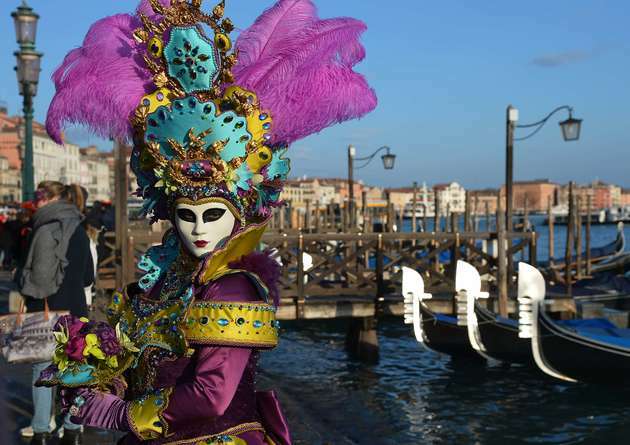The Círio de Nazareth is a Catholic procession that takes place every year in Belém do Pará, in Northern Brazil, on the second Sunday in October.
The procession consists of carrying the original image of Our Lady of Nazareth, affectionately called by its devotees as naza or little girl, from the Basilica (where it stays throughout the year) to the Praça Santuário de Nazaré.

History of the Círio de Nazareth
The tradition of the Círio of Nazareth came about some time after a man found an image of the saint.
Different versions are attributed to this fact. One of the most credible is based on a manuscript by Dom Frei João Evangelista, fifth bishop of Pará, where he says that at the end of October of 1700, Plácido José de Souza would have found an image of the saint near a stream located on the bank of a stream and decided to take it to House.
The next day, the image had disappeared and Placido would have found it again in the same place where he had seen it for the first time. The fact was repeated for days and, thus, Plácido understood that the image should be kept in the place where it always reappeared, building a small chapel there to house the saint.

As it is located near a road, many who passed by knew the image and used to leave candles and wax sculptures, in addition to other types of offerings.
As time went by, more and more people visited the chapel. After the original construction, three other chapels were built (at different times), whose dimensions were always larger than the previous ones, which they were replacing. This need for expansion culminated in the construction of the majestic Sanctuary Basilica.
It was believed that the image would have been of Portuguese Jesuit missionaries. In 1773, Dom Frei João Evangelista Pereira sent it to be restored in Portugal and requested the then Queen Dona Maria I and Pope Pius VI an official license to honor the saint with a festivity.
The authorization was given in 1790, but it only reached Belém in 1792.
First Círio of Nazareth
In 1792, Francisco de Souza Coutinho, then captain-general of the former state of Grão-Pará and Rio Negro, visited the place where the chapel had been built to house the image of Our Lady of Nazareth found near the stream.
Francisco was very impressed with the number of devotees who attended the site and after authorization was granted for Portugal, he decided to organize a large agricultural products fair to attract statewide attention to Bethlehem.
After a few months of preparation, the captain fell ill. Afraid of not being able to open the fair, he promised that if he received the grace of healing, he would ask for the celebration of a mass and then he would take the image of Our Lady of Nazaré on a palanquin, together with the population, to the chapel.
Upon reaching the cure, the captain fulfilled his promise and thus took place the first Círio de Nazareth, with a great procession that took place on September 8, 1793.
Main official pilgrimages of the Círio de Nazaré
The Círio de Nazaré is a religious festival that consists of several official subdivisions. Check out the main ones below.
Transfer
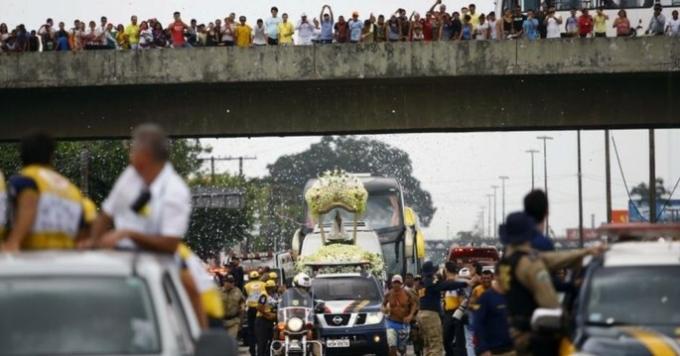
The transfer consists of the first route taken by the Image of Our Lady of Nazareth during the Círio. The image follows on top of a car, from the Basilica of Nazaré to the Church of Nossa Senhora das Graças (mother church), which is located in Ananindeua, a neighboring municipality in Belém.
There, the saint remains overnight, accompanied by a vigil of the faithful.
road pilgrimage
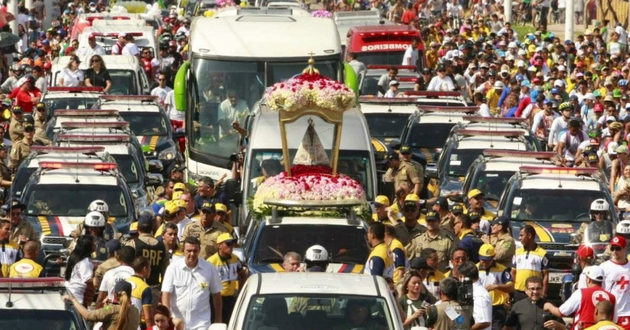
After the night watch in Ananindeua, the image of the saint goes to Vila de Icoaraci, in Belém, and is accompanied by ambulances and cars of official authorities, such as police, firefighters, etc.
river pilgrimage

In the fluvial candle, the image of Our Lady of Nazaré goes by boat through the Guajará Bay, from Icoaraci to the pier from the port of the city of Belém, and is accompanied by canoes, Jet Skis, boats and yachts decorated to honor the saint.
motor pilgrimage
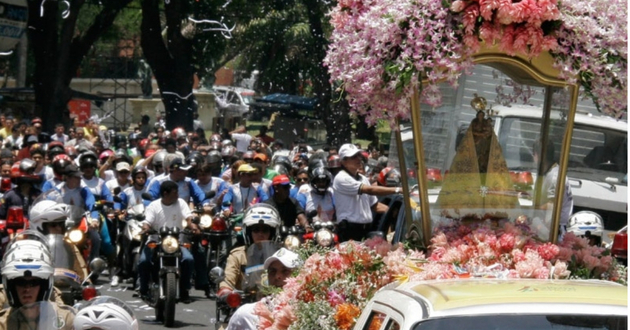
The motor-pilgrimage takes place right after the river Círio. In it, the image of Our Lady of Nazaré departs from Estação das Docas, towards Colégio Gentil Bittencourt, accompanied by a large number of motorcycles, many of them decorated, that, with the sound of the horn, announce the passage of the saint.
translation

The transfer is a procession that takes place the night before the Círio proper. During its journey, the image of Our Lady of Nazaré is carried in a berlin attached to a rope of about 400 meters.
During the transfer, the saint goes from Colégio Gentil Bittencourt and to the Sé Cathedral, in a berlin carried by people, that is, without the aid of any car.
The route of the transfer takes place in the opposite direction to the route of the Procession of the Círio.
Procession of the Círio de Nazareth
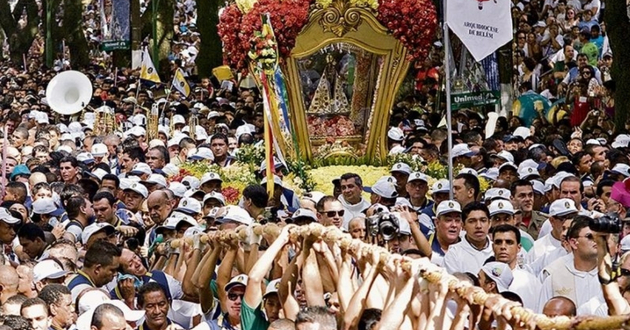
The procession of the Círio de Nazaré gathers more than 2 million faithful and follows a path that goes from the Sé Cathedral to the Basilica of Nazareth.
This pilgrimage is considered the height of the Círio. The route begins with the celebration of a mass and then the image of the saint is taken by the archbishop to the marble, to follow the path to the basilica.
Many devotees form a human cord along the cord. Some follow barefoot, others carry with them crucifixes, images of the saint and/or objects that are related to some grace achieved, as a form of thanks or a request.
Once there, the saint is exposed to the public for a week, in the sanctuary square.
Recession

The Recírio is a farewell procession that takes place two weeks after the Círio. The pilgrimage begins with the celebration of a mass that ends with the Archbishop of Bethlehem removing the original image of the saint from the berlin and raising it to bless the devotees.
The original saint is then placed in a crystal dome on the main altar of the Sanctuary Basilica and remains in place until the following year's Círio.
A pilgrim image of Our Lady of Nazaré goes on a pilgrimage towards Colégio Gentil Bittencourt, staying there until the Círio the following year.
Symbols of the Cereus of Nazareth
Check below some symbols that characterize the Círio de Nazaré.
Berliner

The berlinda is a kind of small sanctuary where the image of Our Lady of Nazaré is transported.
It is a symbol that became part of the Círio in 1882 and is usually decorated with beautiful arrangements of natural flowers.
Before each Cirio, she always undergoes minor repairs.
cloak
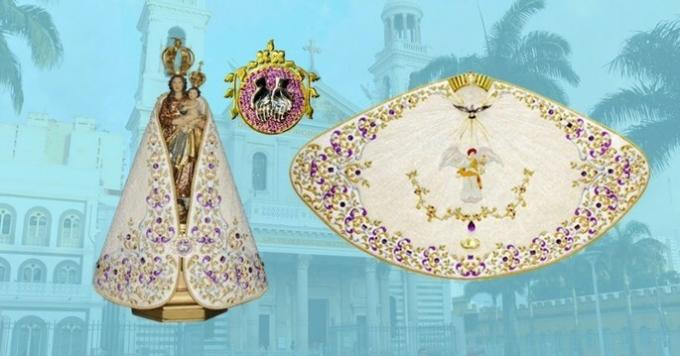
Every year, the image of Our Lady of Nazaré is covered with a new mantle, one of the most important symbols of the pilgrimage.
The robe that adorns the saint has already been made by different people. Among them is a sister of the Congregation of the Daughters of Sant’Ana, a former student of the Gentil Bittencourt College (place that houses the pilgrim image) and also famous stylists.
The production is all based on donations and is usually inspired by passages from the Gospel.
Rope

The Círio de Nazaré rope is used in the Translation and Procession of the Círio.
It was used for the first time in 1885, to pull the marble that had become mired after a flood that occurred at the time of the procession. Since then, he joined the procession.
400 meters long, made of sisal and weighing about 700 kilos, it is attached to the hot seat and is usually disputed by pilgrims during the pilgrimages: there are many who want to follow the procession very closely, holding the rope.
At the end of the pilgrimage, even contrary to the indications of the Board of the Círio, the devotees usually cut the rope because they have faith to receive blessings and protection when keeping a piece of it.
promise cars

In promise cars, the promiseees usually put objects in wax (such as candles and sculptures of body parts that received the cure of some illness), miniatures of houses and boats as thanks for the achievement of these goods, among others.
The objective is always to make a promise to have a request granted or to thank a favor requested and already received.
Arraial de Nazareth

The Arraial de Nazaré is a tradition that began in the first edition of the Círio de Nazaré, in 1793. At the time, it consisted of a large fair for agricultural products.
Over time, the camp began to consist of a series of toys aimed at the entertainment of the faithful, as well as several stalls selling handicrafts, typical foods and other industrialized products, all located in a space close to the Sanctuary Basilica.
Characteristics of the Círio de Nazaré
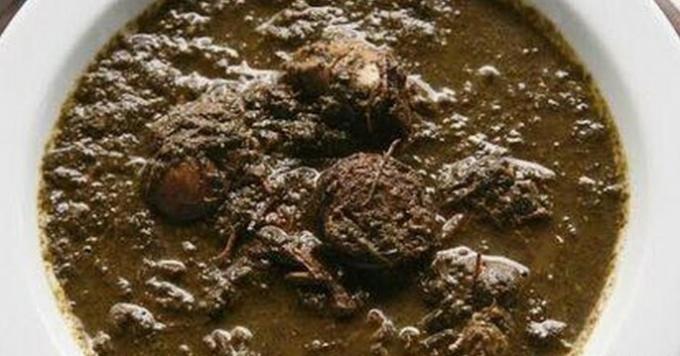
A very striking feature with regard to the Círio de Nazaré is related to the cuisine.
As the pilgrimage approaches, it is very common to feel the smell of the preparation of the maniçoba. The dish is made with cassava leaves, which need to be cooked for 7 days to stop being poisonous.
Another feature is the preparation of an equally traditional dish of this religious season: the duck in tucupi.
In addition to preparing meals, it is customary to find houses and streets decorated to greet Our Lady of Nazaré.
Curiosities about the Círio de Nazaré
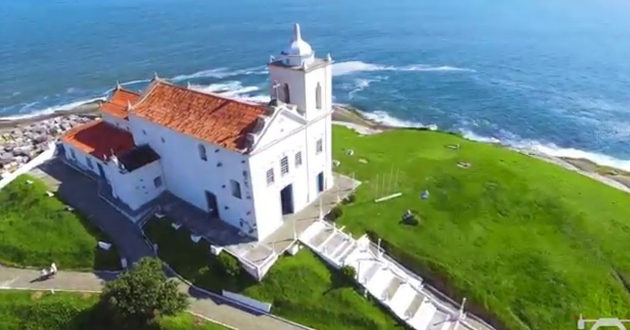
- In September 2004, the Círio de Nazaré was registered by the National Historical and Artistic Heritage Institute (IPHAN), as Cultural Heritage of Intangible Nature.
- The 2009 procession was the longest, accounting for a total of 9 hours and 15 minutes.
- The devotees of Our Lady of Nazaré who accompany the Procession of the Círio de Nazaré, the most awaited moment of the Círio, usually make a journey of 3.6 kilometers.
- Although the Círio de Belém do Pará is the most popular, the oldest Círio de Nazaré in Brazil took place in the state of Rio de Janeiro, in Saquarema, in 1630. An image of Our Lady of Nazaré was found where the parish church of Saquarema stands today.
folklore quiz
Don't stop here! Toda Matéria selected a series of very rich texts on folklore to help you broaden your knowledge.
- Popular festivals that are part of Brazilian folklore
- Brazilian folklore legends
- Brazilian folklore: legends, games, songs, dances and parties
- Source of popular expressions you need to know
- Bumba Meu Boi: origin, legend, dance and parties
- Feast of the Divine
- Cultural heritage

